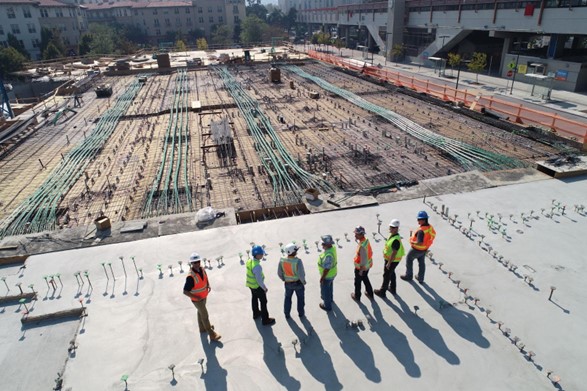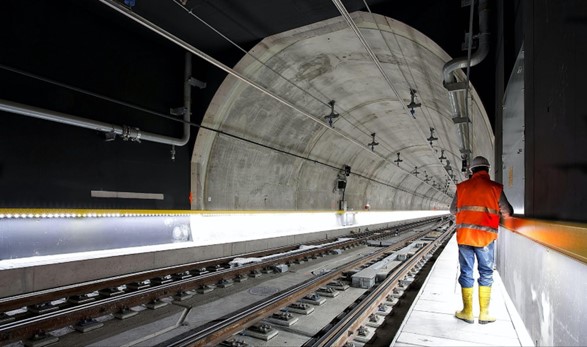
The Power of Cost Codes in Heavy Construction
Transforming construction projects with smart cost coding
Effective project management is at the core of successful heavy construction endeavors, and cost codes play a pivotal role in this process.
Incorporating construction cost coding into daily operations allows project managers to achieve precise cost control and efficient project execution––a practice that leads to more successful outcomes in the competitive heavy construction industry.
This guide sheds light on how cost codes for construction are instrumental in the effective management of projects, enhancing efficiency and accuracy in financial tracking.

Understanding the role of cost codes in construction
Construction cost codes are fundamental tools that simplify financial tracking and budget management for a project. In essence, these codes are specific identifiers assigned to various expenses and tasks for a project.
Each code represents a particular cost category, such as material, labor, or equipment. By using cost codes, project managers can quickly identify and categorize expenses, making it easier to track where funds are being allocated and how they are being used.
Moreover, cost codes can help you gain insights into a project’s financial health. For example, a code can correspond to a specific phase of construction, like excavation or concrete pouring, allowing for a detailed view of expenses in that area. This categorization is particularly beneficial in large-scale projects where multiple activities occur simultaneously, making budget oversight critical.
The classification for cost codes can vary, but a common framework used in the United States and Canada comes from the Construction Specifications Institute (CSI). This system, which is part of the CSI’s MasterFormat and commonly known as the CSI Divisions, establishes a standardized language for cost categorization, enhancing communication and understanding among different stakeholders in the construction industry.
Setting up and utilizing cost codes effectively
Implementing cost codes for construction projects requires a structured approach to ensure ease of use and effectiveness. The process begins with the identification of all expense categories relevant to the project, which could include materials, labor, equipment, and other project-specific expenses. Each of these categories should then be assigned a unique code.
Utilizing a standardized system like the CSI Divisions can streamline this process. The CSI Divisions provide a comprehensive framework for categorizing construction costs, which can easily be used for your project’s cost coding needs. This standardization simplifies the initial setup and ensures consistency in financial tracking and reporting.
Once the codes are in place, they need to be integrated into the project’s financial systems. It’s vital that all team members are well-versed in the coding system and understand its importance in project tracking—regular training and clear documentation can help in this regard.
Periodically evaluating the cost code system is essential. To identify any adjustments needed to maintain the system’s relevance and effectiveness throughout a project’s lifecycle. Adhering to these guidelines will enable construction professionals to effectively set up and utilize cost codes, resulting in improved project management and financial oversight.
The role of cost codes in heavy construction projects
Cost codes are particularly useful in heavy construction. For instance, during a complex highway construction project, unique cost codes can be assigned to different stages such as earthwork, paving, and bridge construction. This offers detailed budget tracking and helps to pinpoint areas where actual expenses may be deviating from the plan.
Additionally, cost codes are useful for managing subcontractor expenses. Assigning a specific code to each subcontractor’s scope of work simplifies the process of tracking their expenses and comparing them with the allocated budget, enhancing transparency and accountability.
Another notable application of cost codes is in managing change orders. When changes occur, cost codes assigned to these changes can track their financial impact. This ensures that all additional costs are accounted for and evaluated against the overall project budget.
Case Study: The use of cost codes on the Crossrail project
The United Kingdom’s Crossrail project, which is now known as the Elizabeth Line, is one of Europe’s largest railway and infrastructure projects. Stretching across London and its surrounding areas, this expansive project encompassed building new rail lines, tunnels, and stations, while seamlessly integrating with the existing rail network.
Using cost codes on the Crossrail project was imperative, particularly given the project’s scale and complexity. With an estimated cost of more than £18 million, effective financial management was essential. Here is a closer look at how cost codes on this project proved to be invaluable.
 Streamlined budget management and cost tracking
Streamlined budget management and cost tracking
Cost codes allowed project managers to carefully track and manage expenditures across the components of the project. Each activity, from tunneling and station construction to grading and surface work, was assigned a specific code. This level of detail enabled the financial team to monitor spending in real time, ensuring that each segment remained within its allocated budget.
Enhancing transparency and accountability
Because of the public interest and government funding involved, transparency and accountability were pivotal. Cost codes facilitated this by providing clear, detailed financial reporting, making it easier for stakeholders like the UK government, Transport for London, and the general public, to understand how funds were being used.
Managing complexity and multiple contractors
The Crossrail project involved numerous contractors and subcontractors. Cost codes enabled central project management to effectively coordinate and track the financial aspects of these diverse contributions. This was crucial in avoiding cost overruns and ensuring that each contractor’s work aligned with the overall budget.
Adapting to changes and overcoming challenges
Throughout its development, the Crossrail project faced various challenges, including engineering complexities and unforeseen obstacles. The flexibility of the cost coding system was essential, allowing for quick financial reassessment and management. This adaptability was necessary in maintaining organization during periods of change and uncertainty.
The strategic implementation of cost codes in the Crossrail project brought clarity, control, and efficiency to a complex, multi-faceted endeavor. This case study clearly demonstrates the power of cost codes in managing large-scale, intricate heavy construction projects.
Leveraging cost codes for better project management
Using construction cost codes can significantly enhance how you manage your projects. As mentioned above, these codes can be integrated with estimating and project management software, enabling real-time tracking of expenses. This integration provides a clear, immediate overview of a project’s financial status, allowing for swift and informed budgetary adjustments.
Another strategy is the utilization of historical data. By analyzing past projects and their cost code allocations, managers can identify patterns and areas of frequent overspending, leading to more accurate budgeting on future projects.
Plus, customizing cost codes to align with the unique needs of each project or company can significantly boost efficiency. Tailoring the codes to the specific requirements of a project ensures more accurate and relevant expense tracking.
For a comprehensive understanding and implementation of cost codes, referring to established standards like the CSI’s MasterFormat can be a valuable resource. This system offers a detailed classification of construction-related costs, serving as a guideline for creating and managing cost codes.
The strategic application of cost codes in construction projects—be it through software integration, historical data analysis, or customization—leads to more refined and effective project management. These practices, coupled with standardized systems like MasterFormat, offer a robust framework for enhancing efficiency and precision in cost management.
Cost code management in the digital age
The integration of cost codes with advanced software tools like TCLI’s Field Link® represents a significant leap in managing construction project finances, creating a new level of efficiency and control. With this software, estimators and project managers can harness the power of real-time information, ensuring that every dollar is tracked, accounted for, and aligned with the project’s budgetary framework. They also can assign cost codes to different tasks within a project, such as specific labor, equipment, and material, among others.

This software provides insightful analytics, a key feature that enables managers to forecast costs and identify potential overruns before they become critical issues. The software also facilitates seamless communication between stakeholders, ensuring everyone is on the same page regarding financial matters.
The integration of cost codes into software also enhances reporting capabilities. As highlighted in this overview of Field Link from Slashdot, the program provides real-time analysis and variance reporting. Plus, it allows users to examine variances across single or multiple projects, either in monetary terms or percentages––equipping construction professionals with the data needed for making informed, strategic decisions.
In summary, the marriage of cost codes and technology is setting a new standard for financial management in construction projects. Embracing these technological tools is becoming increasingly essential in the always-evolving construction industry, both for maintaining competitiveness and ensuring project success.




